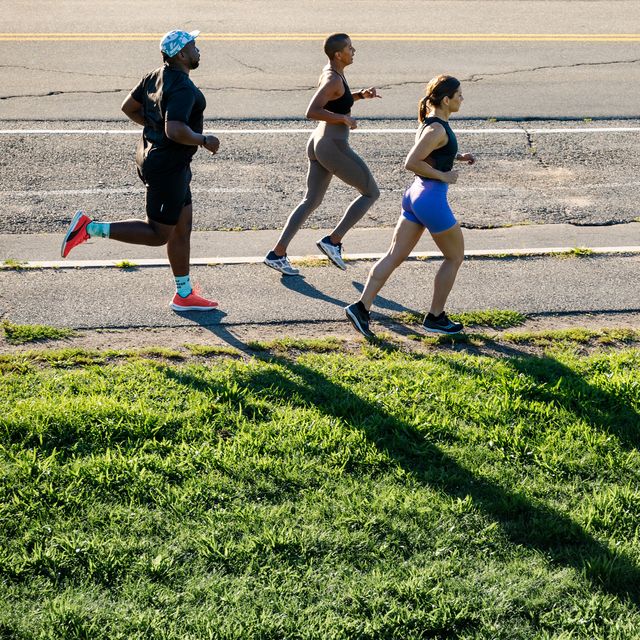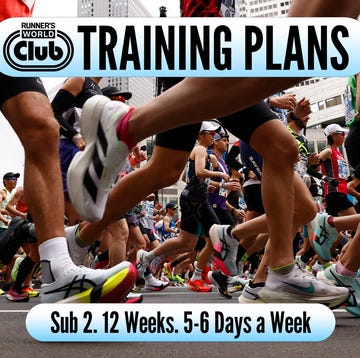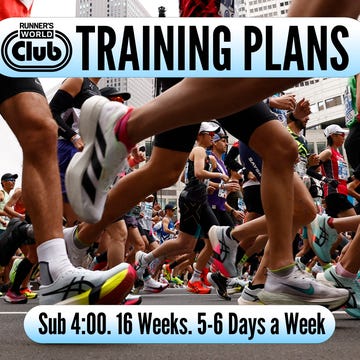Going out for a short shakeout run a day or two before a half marathon or marathon – either by yourself or with others – is an excellent way to prime your body for what’s to come. Plus, on many occasions, it can be exactly what you need to calm your pre-race nerves.
If you’re taking part in a large-scale event like the London Marathon, you’ll find that a host of brands and running crews will be hosting group shakeout runs in the final days before the race. Go along to one of these and you’ll have the chance to meet and connect with other runners who, like you, have trained for months to get to the start line in healthy and happy condition – and that’s another great reason to add a shakeout run to your agenda.
Want to know how to shake it out ahead of your next big race? We’ve shared some dos and don’ts to help you make the most of that shakeout run.
What everyone's reading
The benefits of shakeout runs
A shakeout run involves clocking a few miles at an easy pace a day or two before a half marathon or marathon. With a few precautions in mind, it can benefit you both mentally and physically.
‘There’s activation, there’s mobility and there’s recovery – and all of those things come together to create a great performance,’ says Emily Booth, a personal trainer and marathoner who has conquered the Boston Marathon eight times. Shakeout runs fall into the activation category. They can help to promote blood flow, neurological activation and neuromuscular activation, which, as Booth explains, is especially helpful for runners who have been tapering for a marathon.
In short, shakeout runs are great for improving your mind-body connection, enabling you to set a rhythm that will come in handy on race day. Plus, if you’ve spent a long time travelling to your race destination by plane, train or car, Booth says that doing a quick and easy shakeout run will help to loosen tense muscles and prepare them for the main task at hand.
Shakeout runs are also known for bringing runners together and fostering a sense of community, especially the day before a major running event. ‘There’s this unspoken energy about meeting with people,’ says James McKirdy, founder and head coach of McKirdy Training. ‘Sometimes, it’s described as electric – and that emotion can be very uplifting.’ In fact, it’s often an experience that you’ll never forget.
Dos and don’ts of shakeout runs
Do go slow
Consider your body’s glycogen stores as your personal energy bank account – as Booth says, you can only make so many withdrawals before you have to top it back up. While it’s important to go for a shakeout run at least the day before a marathon to activate your muscles, stay aware of your pace. That way, she adds, you won’t overdo it and have trouble replenishing your glycogen stores before your event. This means completing your shakeout run at an easy pace.
‘If you’re going to run with other people, you should be able to hold a full conversation without huffing and puffing at all,’ adds Amanda Nurse, owner and founder of Wellness and Run Coaching, who has also completed 25 marathons so far.
Booth, too, suggests paying attention to your breathing rate and muscle activation, as burning muscles can indicate that you’re running too fast. She says that your shakeout run effort should be no greater than that of your slowest long run – in other words, aim for a three out of 10 effort on the rate of perceived exertion (RPE) scale and stay within zone 1 or 2 if you’re monitoring your heart rate.
A group shakeout run can generate swathes of energy, which is often the positive boost you need before a big race. However, try to enjoy the atmosphere smartly and stick to your own easy pace while running. ‘Nobody wins the shakeout run, nobody wins the warm-up and that’s what you’ve got to remember,’ says Booth.
Don’t spend too much time on your feet
Walking around and visiting other events and attractions in the days before your race – especially if you’re running in a new and exciting location – can often result in a lot of time on your feet, so try to be mindful of this and limit your step count if you can. McKirdy suggests that you attend, at most, three race weekend events, especially if you’re running in a vast, bustling city like London, Berlin or New York City.
‘It’s really easy to walk miles and miles on your feet in the two or three days leading into the race,’ says McKirdy. If it’s a walkable city, you can easily add thousands of steps to your day – and that can affect your race performance.
Do stick with your training schedule
‘If you don’t typically run the day before a long run or harder session and, instead, use it as a cross training day or recovery day, keep it the same,’ says Nurse. So, if a shakeout run won’t feel good to you the day before a race, skip it.
If you want a great alternative, Nurse recommends walking for up to 30 minutes, cycling at a low intensity for about 10 minutes or running a 5K at an easy pace two days before race day. Just make sure that you don’t run or train the next day.
Don’t judge your race potential by your shakeout run
Don’t forget that a shakeout run is designed to help you ‘shake out’ your muscles, which means that you should complete it at an easy pace – no faster. It’s also a good time to shake off any race jitters, so you can get into a positive mindset – if you haven’t done so already – for race day. It’s not the time to see how fast you can run and use it as a race day predictor.
If you do want to get the legs turning over faster, though, Nurse suggests adding a couple of 20-second or 30-second strides to the end of your shakeout run. This can help to ease your nerves around performance, she says.













